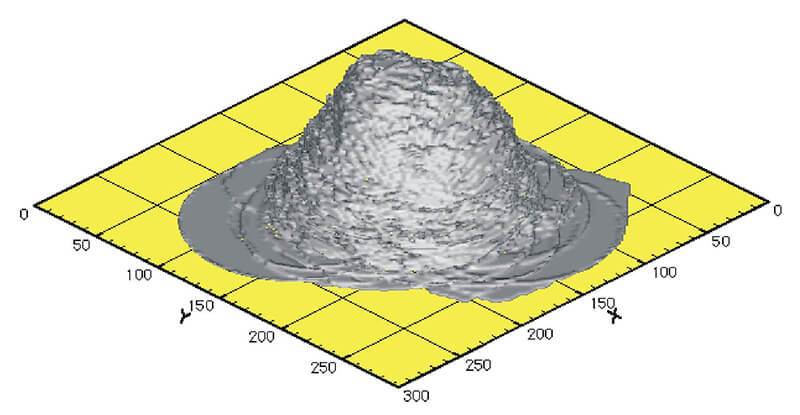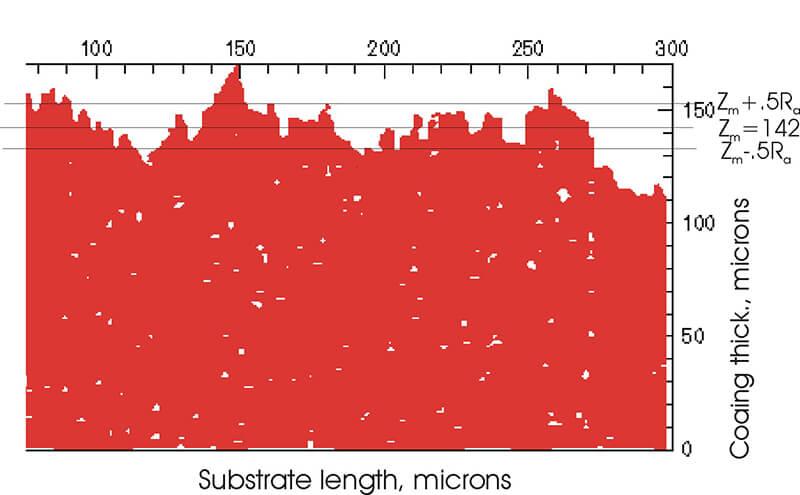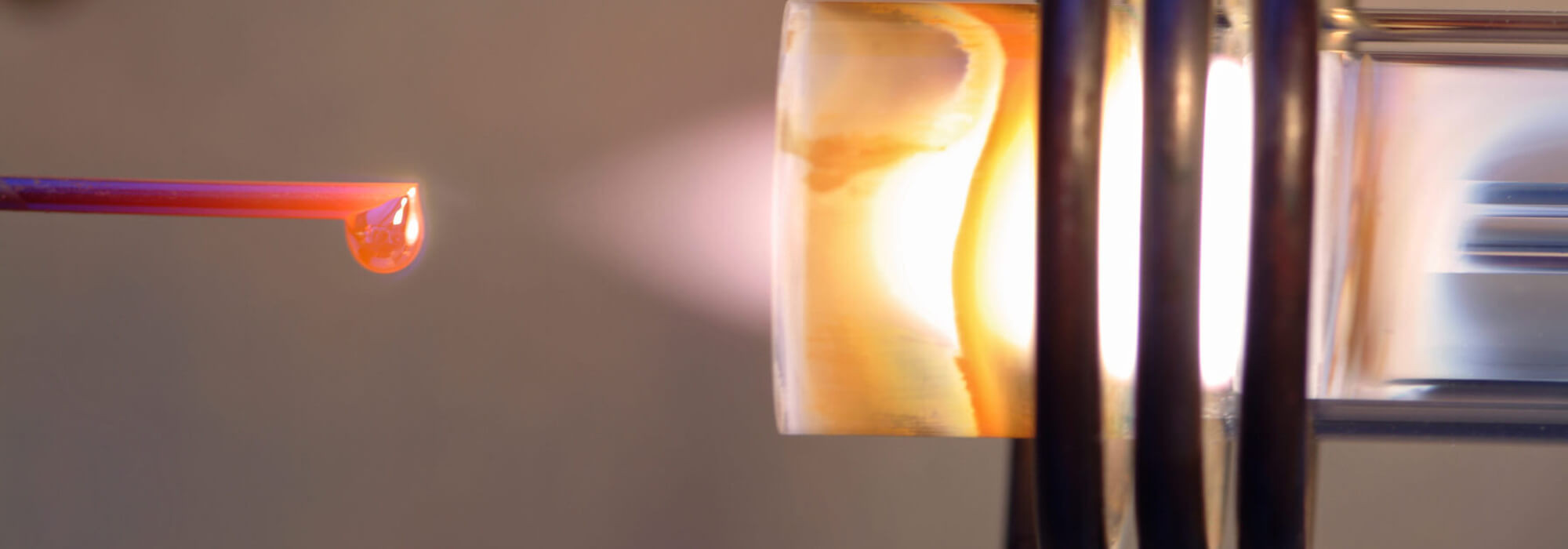Coating Formation Modeling
Numerical simulation of alumina coating formation by droplet deposition model
- Michelle Xue
Over the past three decades considerable efforts have been devoted toward understanding the nature of thermal spray processes and predicting coating microstructure. Although the dynamics of single droplet impact, and interactions between two droplets, can be simulated quite accurately using numerical codes, until recently it has not been possible to directly simulate the formation of thermal spray coating by the deposition of hundreds of droplets.
This work conducted a first attempt at using a three-dimensional, time-dependent numerical model of free-surface flows and heat transfer including phase change to directly simulate the sequential deposition of hundreds of thermally sprayed ceramic droplets (alumina) with a range of diameters and impact velocities onto a stainless steel substrate to build up a coating. The applicant conducted two simulations, one with assigned droplet deposition positions and impact parameters, and the other with randomly generated droplet properties. The process parameters of both two schemes, such as the droplet velocity, diameter and temperature, are based on the experimental measurements of thermally sprayed alumina particles. The model generated simulated coatings and the cross-sections through the simulated coating were used to give information about properties such as porosity, thickness and surface roughness.
500 Assigned Deposition
300 Assigned Deposition
A Stochastic thermal spray coating model
- Reza Ghafori-Azar
Plasma sprayed coatings consist of lamellar splats interspersed with pores. Splats - which are formed by the impact, spreading and solidification of individual droplets onto the substrate - are the fundamental building block of the coating. Depending on the shapes of splats and the nature of their interactions, different types of microstructure, varying porosities, and consequently different coating properties are obtained. Splat shape depends on many factors such as size, velocity and thermophysical properties of the impacting particles, as well as the topology and properties of the substrate. On-line measurement of these parameters for all impacting particles would be enormously complex, but their statistical distributions can be easily determined. we have have developed a 3-D stochastic model of thermal spray coating formation. We assume that the mean values and standard deviations of droplet size D, velocity V, temperature T, impact point and degree of splat edge curl up are known. Based on probability density functions - assumed to be normal - we estimate the instantaneous process parameters for each impacting particle and calculate splat sizes. At present the splat size is predicted analytically. Droplets are assumed to spread after impact and form disks whose edges curl up due to thermal stresses. This is assumed to be the primary source of porosity. The model is used to predict coating porosity, thickness and roughness as a function of spray parameters.
Results
The stochastic model was applied to the deposition of nickel particles. Figure 1 shows the coating formed in a 300 x 300 microns substrate area by a gun held stationary over the centre of the substrate. The effects of gun movement on the surface profile of coating are depicted in Figure 2. Here gun travelled over the substrate with a constant velocity. As expected, the coating thickness was uniform for the moving gun. Cross sections through the coating gave values of the thickness, porosity and surface roughness distributions.
Cross sections through the coating (Figure 3) gave values of the thickness, porosity and surface roughness distributions in the coating. Figure 4 illustrates a typical cross-sectional view of the coating microstructure. The mean thickness and average surface roughness of this section are about 140 and 17 respectively.




A Stochastic coating model with extended coating domain
- Michelle Xue
This work extends a stochastic model to predict the microstructure of thermal spray coatings by modeling the whole spraying and coating process from droplet in-flight conditions to coating formation. After extension, the model can now model the coating deposition on a 1cm x 1cm substrate domain, which is much larger as compared to the previous simulation on a 1mm x 1mm domain. The model is capable of predicting the porosity, average thickness and roughness, and the residual stresses of thermal sprayed coatings as a function of process parameters, such as droplet size and velocity, gun standoff distance and motion mode, and coating material properties.

